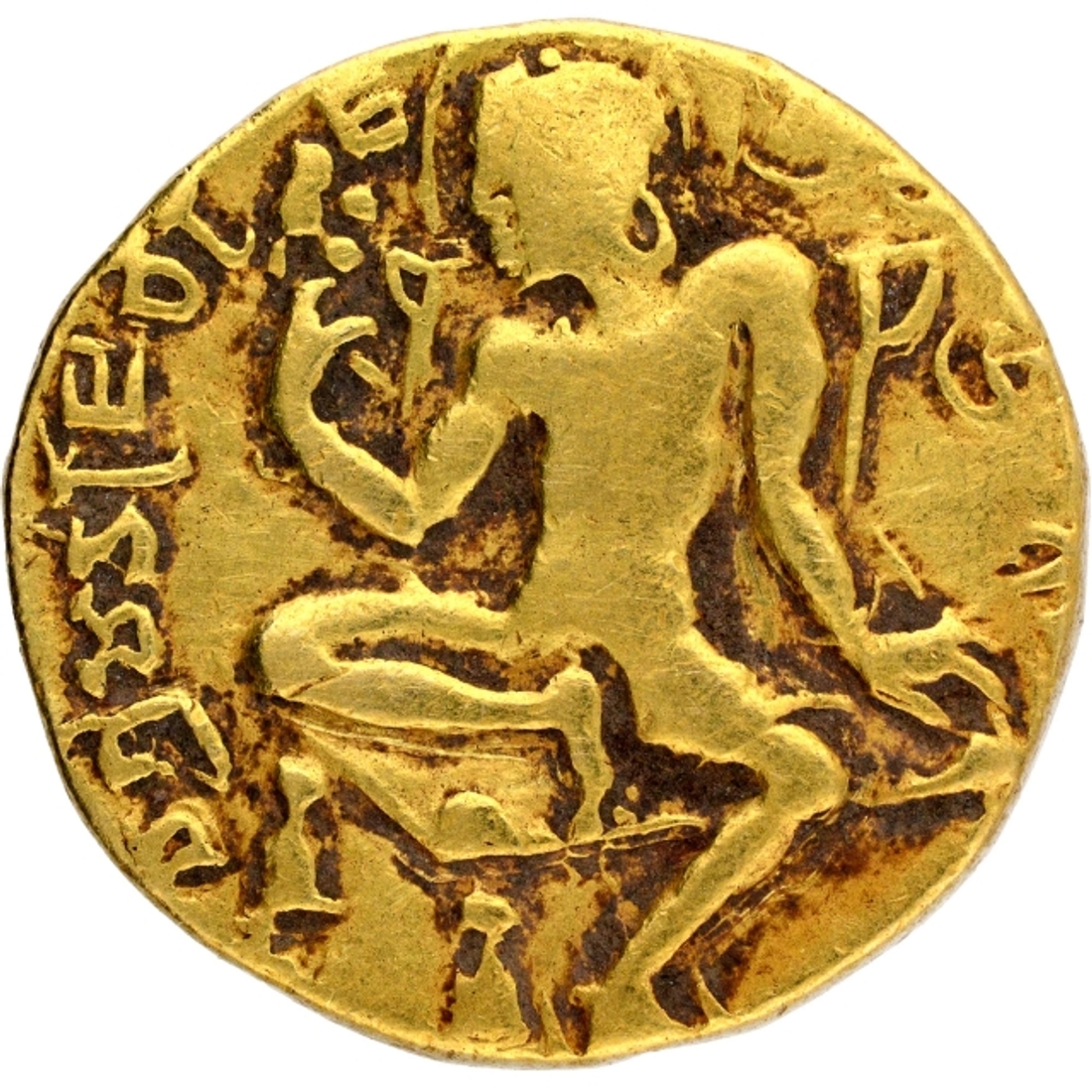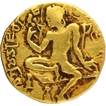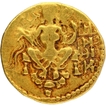This Lot is closed.
- P-Auction # 29
- Bids: 6
- Views:1782
| Start Price 3500000 | Estimated Price 3500000-4500000 |
| login, to view Hammer value | |
| Quick Description | ||||
|---|---|---|---|---|
| Denomination | Gold Dinara | Metal | Gold | |
| Full Description: Gupta Empire, Chandragupta II (Vikramaditya) (375-415 AD), Gold Dinar, “Couch” type, Plate Coin, Obv: bare bodied king, nimbate (halo), seated in frontal pose on a high-backed four-legged couch, admiring a lotus bloom held in his right hand, while the left hand rests on the seat, wearing dhoti and earrings, Brahmi legend “Deva Sri Maharajadhiraja Shri (Chandragupta)sya” around, Rev: goddess Lakshmi, nimbate, seated frontally on a throne, wearing ornaments and a thin upper-body garment or Uttariya depicted with delicate folds, resting her feet on a wide lotus-shaped pedestal, she holds a lotus in one hand and makes a gesture of benevolence (Varadamudra) with the other hand, tamgha at left field, Brahmi legend “Sri Vikramah” at right field, 7.61g, 20.24mm, (variant of Altekar, Bayana Hoard # Pl. XVIII-13/TOTGE, S. Kumar # Group 1-Var. B, Plate Coin No. 4), about extremely fine, Supreme Rarity. Note: Plate coin of TOTGE by S. Kumar # Group 1-Var. B, Plate Coin No. 4 Chandragupta II (or Vikramaditya, “Sun of Valour”), was celebrated for extending the empire to Ujjain, but his reign became more associated with cultural and intellectual achievements than with military conquest. Fa-Hein, the Chinese traveler and a Buddhist pilgrim who visited India between 399-411 AD primarily for Buddhist studies has mentioned the superior architecture and political greatness in India during the reign of Chandragupta II. This coin is the living example of the paramountcy of the classical period during Gupta Empire. Historians mentions that the norms of Indian literature, art, architecture, and philosophy were established in this empire. It shows the King seated in a pose classically described as Rajaleela-Asana. The depiction is realistic and executed in a supple style so typical of sculptures of the Gupta period. The couch type was obviously suggested by the Lyrist type of Samudragupta. On both the coins of these rulers we see the king seated on a high-backed couch, Samudragupta was shown playing lute whereas this coin does not show Chandragupta II playing any musical instrument so he was probably not a musician like his father. The transition can be seen from one ruler type to another clearly. Altekar assumed that this variety was issued as special coronation issue. Allan suggested that these were struck for a special purpose and it may be attributed to Pataliputra. The obverse legends in Brahmi are “Deva Sri Maharajadhiraja Sri Chandraguptasya” “देव श्री महाराजाधिराज श्री चंद्रगुप्तस्य” and the reverse legends in Brahmi are “Sri Vikramah” “श्री विक्रम:”. Altekar mentions one piece each in the collection of the British Museum, Lucknow Museum, Indian Museum (Calcutta) and the Prince of Wales Museum (Bombay). The Bayana hoard had three specimens reported in it. Allan mentions only 2 specimen known of this type. Kumar has mentioned total 8 pieces of this variety which is classified in 2 groups and further classified on the variations of legends in the obverse and reverse. There are totally 5 variations reported by Kumar amongst the 8 recorded pieces till date and he classifies them into two different rulers. The obverse variation is with the extra word “Rupakriti”. The reverse variations are goddess holding diadem and empty handed in her left hand, another variation of the legends Sri Vikramah on right and left. On the basis of the title “Sri Vikramah” readable at reverse on this specimen which is seen on the coinage of Chandragupta II, we also attribute this to Chandragupta II same like Allan and Altekar. Plate coin and One amongst the only 8 pieces known in the world! Imperative rarity in the Gupta Coinage! | ||||


